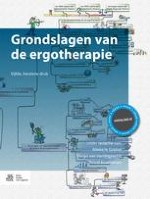Samenvatting
In dit hoofdstuk passeert een aantal ergotherapiemodellen de revue. We kijken naar de achtergrond, oorsprong en ontwikkeling van de betreffende modellen en hun theoretische onderbouwing. Per paragraaf wordt ook de structuur van het model beschreven zodat men zich een beeld kan vormen van hoe het model te gebruiken in de praktijk. Verder beschrijven we de visie achter het model, gericht op handelen en participatie en waar mogelijk op interventie. Ten slotte worden eventuele assessments en meetinstrumenten benoemd en is bij elk model beknopte achtergrondliteratuur te vinden, zodat de lezer zelf verder op onderzoek uit kan gaan wanneer hij meer over het model te weten wil komen.
